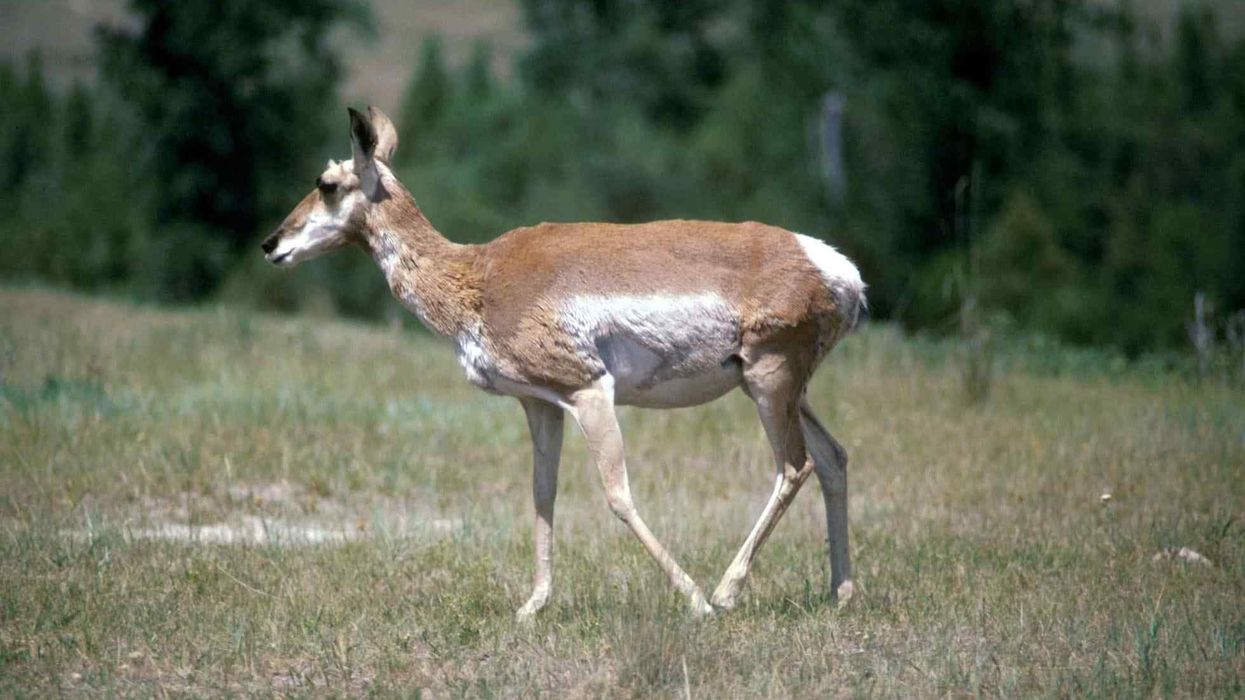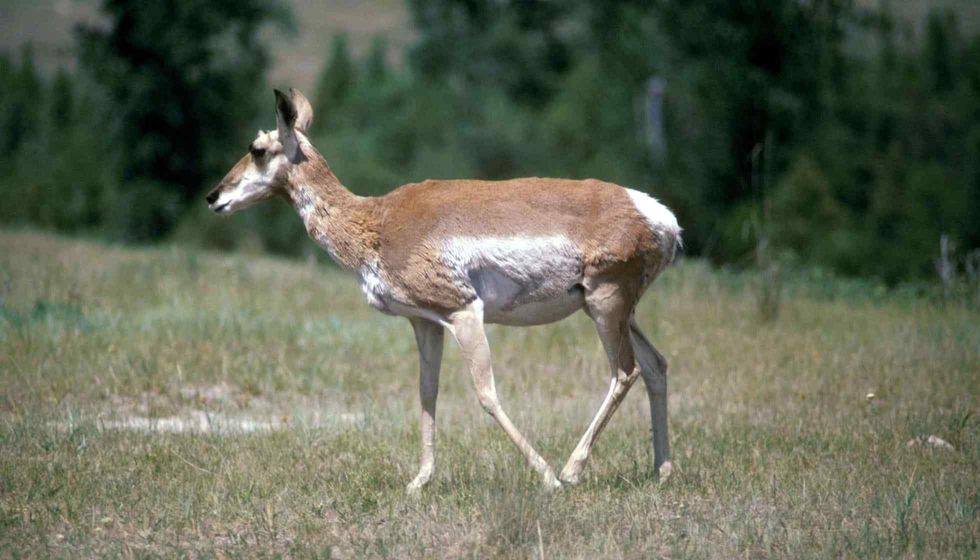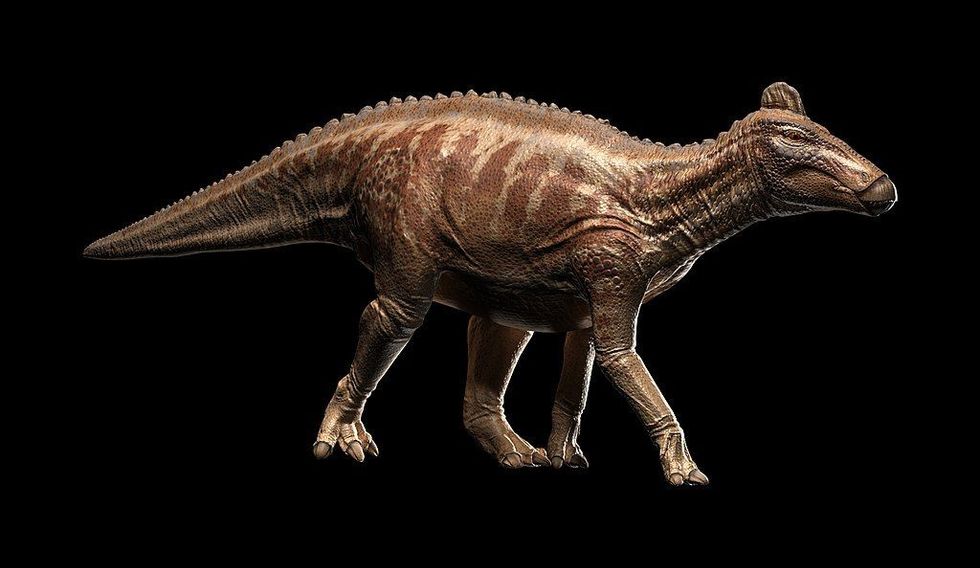A pronghorn is an animal group that lives in western and central North America. They live principally in the field districts, however, groups may also be found in the deserts.
Pronghorns are herbivores, and their eating routine comprises grass, prickly plants, vegetation, forbs, and bushes, and in the winter, they eat sagebrush and a few different available herbs. Pronghorns are dark in color with white markings on their underside and rump. Bucks also have black faces and neck markings.
In addition to the fact that pronghorns in the United States have the longest land movement and migration, they are also the quickest land creatures in North America.
They run at a speed of nearly 60 miles per hour. It can make bounds of up to 20 feet when it is running.
They are not quick as cheetahs, but they maintain a quicker speed than cheetahs for a more extended time frame.
Pronghorn herds move 150 miles every route between Wyoming's Grand Teton National Park and Upper Green River Basin. The caribou is the solitary other land creature to travel farther in North America (American Antelope).
Although it is not an antelope, it is regularly referred to colloquially in North America as the American antelope, prong buck, pronghorn antelope, grassland antelope, or antelope since it intently looks like the genuine antelopes of the Old World and fills a comparable biological specialty because of equal development.
Pronghorn rely upon their solid vision. On the off chance that a pronghorn detects a hunter, it raises its white posterior hairs. The white hairs are noticed by other pronghorn. They realize this as a sign to be ready—peril is close. Pronghorn additionally use smell to draw in mates and signify peril.
Pronghorns have enormous eyes and phenomenal vision. They can spot hunters from exceptionally far away. Pronghorns are around 3 ft tall, 4.5 ft long, and weigh somewhere in the range of 100 pounds. Females will, in general, not weigh as much the bucks.
Pronghorns are not deer but have the body shape of deer. They are North American ungulates (hoofed animals) that are similar to goats and antelopes.
Three subspecies of pronghorn are considered endangered in all or part of their ranges in Mexico. The Sonoran pronghorn (American Pronghorn) is fewer than 300 in number in America and roughly ranges from 200 to 500 in the lands of Mexico. On the other hand, the population of peninsula pronghorn in Baja, California, is estimated to be at 200.
If you liked reading this article about pronghorns, you could also check out bighorn sheep and water buffalo.
Pronghorn Interesting Facts
What type of animal is a pronghorn?
Pronghorns are hoofed animals. They are related to goats and antelope.
What class of animal does a pronghorn belong to?
Pronghorn antelope (Antilocapra americana) belongs to the Mammalia class of animals.
How many pronghorns are there in the world?
There are a total of 700,000 pronghorns in the world.
Where do pronghorns live?
Pronghorns live in brush, fields, deserts, open plains, grasslands, and river basins.
What is a pronghorn's habitat?
The pronghorn habitat includes fields, brushes, deserts, open plains, river basins, and grasslands. They can be found most particularly in North America, but their reach ranges from Canada to Mexico as well. Pronghorns in the U.S.A are found across Montana, Great Plains, Utah, Wyoming, Oregon, California, Arizona, Colorado, Nevada, and New Mexico.
Who do pronghorns live with?
Pronghorns (Antilocapra americana) live on their own and in herds as well. Males breed with a herd of females that they defend against other males. Being part of a herd helps them stay safe.
How long does a pronghorn live?
Pronghorns live for around 10 years.
How do they reproduce?
Pronghorn breeding around fall, depending on the contingent of their area. Bucks breed with different female pronghorns inside their domain. After mating, the females are pregnant all through the winter and conceive their offspring in early winter, giving birth to possibly one or two fawns.
What is their conservation status?
Pronghorns are considered endangered. They come under threat of extinction due to habitat loss, human-animal conflicts, and overexploitation.
Pronghorn Fun facts
A few pronghorn facts for kids are that they belong to the Animalia kingdom, their phylum is Chordata, their class is Mammalia, their order is Artiodactyla, suborder is Ruminantia, and infra order is Pecora. The pronghorn range is from the south of Canada to Mexico. Pronghorn speed of running is around 60 miles per hour.
What does a pronghorn look like?

Pronghorns (Antilocapra americana) have the body of a deer with long legs, a short tail, and a long nose. The fur is a reddish-brown, yet it can likewise be tan or dark brown.
Their necks have white stripes and there are extra white markings on their face, stomach, and backside. The back end has extra-long white hairs that the pronghorn can stand up when frightened.
How cute are they?
Some kids do find them cute enough to keep them as pets. One fact about pronghorns is that land was bought in 1969 to make the San Diego Zoo Safari Park.
Guardians remained on the property to secure it and the natural life that showed up to live at the new facility. The free-wandering pronghorns pursued the overseers around the colossal property, similar to pet canines. Today, five pronghorn bucks make their home close to the camels in the Zoo's Elephant Odyssey.
How do they communicate?
Both genders have scent glands on their rump and in the middle of the toes, while guys likewise have them behind the ears and on the back. Vocalizations, including grunts, wheezes, cries, and thunders, are additionally utilized by the pronghorns to speak with one another.
These might be utilized during romance, forceful experiences, and to help females and their grovels find one another.
How big is a pronghorn?
Pronghorn (Antilocapra americana) is around 4-5.5 feet (1.3 – 1.5 m) in length and 80-120lbs in weight.
How fast can a pronghorn run?
Pronghorns can have a speed of 60 miles per hour (98 kph). It comes in the second position as the fastest land mammal on land in the world, behind only the cheetah.
How much does a pronghorn weigh?
Adult males weigh range from 88–143 lb (40 to 65 kg) and females weigh 75–106 lb (34–48 kg).
What are their male and female names of the species?
A male pronghorn is called a buck, and a female pronghorn is known as a doe.
What would you call a baby pronghorn?
The baby pronghorns are called fawns. Fawns are really adorable.
What do they eat?
Pronghorns are famously known to digest their food twice and, being herbivores, eat sagebrush, grass, and grassland plants. When they swallow their food, it goes down to their stomach and begins the process of regurgitation, where the pronghorn chucks up and then chews on the cud to break food material into tinier pieces to gain more supplements from it.
They only drink water once in a while since most of their water is sourced from the plant nutrients consumed.
Are they dangerous?
It is known that the Pronghorn is practically quite tricky to get close to. It is perhaps the most alert and watchful creature on its lands. Across the world, though, Pronghorn have a reputation for being the friendliest creatures, although they are quite wary and skittish around humans at first.
Would they make a good pet?
Yes, they may make a good pet if one could ever get a hold of one – which is incredibly hard as they are the second-fastest land animal on Earth with the capability to sustain their speed for much longer than the cheetah. In other words, it is wiser to let creatures of the wild roam the Earth free.
Did you know...
Fun fact - pronghorn vs antelope: Genuine antelopes don't shed their unbranched horns.
Further, the pronghorn sheds these horns like deer shed their tusks. Both female and male pronghorn horns are made of an empty sheath encompassing a hard center from a skull segment over the eyes.
Be that as it may, horns on the females just develop around 4 inches (10.2cm), while on the males, horns can be as tall as 20 inches (50.8cm).
Despite its name, the pronghorn eland is neither identified with genuine antelopes (in Africa) nor to goats.
All things being equal, a couple of subtypes of pronghorn are the last enduring ancestors of the 20 million-year-old family Antilocapridae. Having horns like those of sheep and goats, the pronghorn is strange in that its horns are extended like tusks.
Males shed their horns in the fall, soon after the mating period. The horns grow during winter.
One of the facts about pronghorns is that females give birth to fawns who are odorless by birth which helps them (fawns) to be safe from wildlife predators.
Pronghorn predators
These wildlife animals are the best-tasting game meat there is. It has been accounted for that the brilliant hawks go after both the grovel and the grown-ups. Wolves, cougars, bears, and even falcons all go after pronghorns now and again, yet the coyote kills the most, particularly in the north of Yellowstone National Park. Humans don't eat pronghorn meat.
Are pronghorns endangered?
Previously, they needed to be concerned with hunters and a chilly climate.
Today the greater dangers for pronghorns include vehicles, obstructed walls and streets, and the advancement of civilization. Organizations like NWF as well as people across the world are working hard to make natural life easier for the pronghorn and other migratory wildlife so that there may be fewer clashes between animals and people.
700,000 pronghorns are currently recorded in the wild, the peninsular pronghorn and the Sonoran Pronghorn are the subspecies of pronghorn that are presently on the endangered species list.
Here at Kidadl, we have carefully created lots of interesting family-friendly animal facts for everyone to discover! Learn more about some other mammals including the zebra and the mountain zebra.
You can even occupy yourself at home by drawing one of our pronghorn coloring pages.










